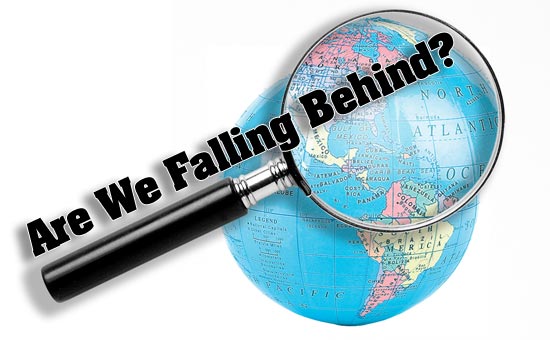Although it’s been
almost two weeks since we returned from Australia, I still wish I was there
exploring more of the agriculture and country! We saw numerous aspects of
agriculture while we were there, but like many of my classmates, the most
impressive to me was the National Livestock Identification System (NLIS). This
was something we learned about on the second day in Australia at the Victoria
Department of Primary Industries. The NLIS is a mandatory system for all cattle
in Victoria and is working its way into the mandatory side of sheep
identification. It tracks animals from birth to slaughter in a number of
different ways depending on their life journey and the farmer’s business.
First, they are given
an eID tag which is an electronic ear tag that is placed in the right ear only.
It has a property number and individual ID number. You can also use an
electronic bolus that is placed in the rumen rather than the ear tag. On the
ranch, farmers have an electronic wand reader that can be waved over the tag or
a computer reader that is connected to the scales. Owners can use this to track
virtually any information they want; such as gestation length, vaccinations,
age, sickness, etc. If the animal is leaving the property for another, they are
scanned leaving, on the transportation trucks, and arriving. Finally, they are
scanned at the abattoir to show where they are harvested and where the cuts are
sent.
The most impressive
part of this system is the fact that every animal’s whereabouts are always
known. If there is a sudden disease/sickness outbreak, the NLIS shows exactly
what property that animal was from. Investigators can be there checking other
cattle or sheep on the same farm and surrounding areas within a short few
hours. Farmers in Victoria also like the system because of the efficiency it
offers. It makes it easier and quicker to manage a large herd.
In comparison to the
United States, we currently have nothing like this mandatory by law. We have
not implemented something similar largely because of the expense to farmers and
the overall industry. However, if we did develop a similar system, the cost
would be well worth it. With the constant increase in population and high
consumer demand for more and higher quality beef, a similar system could
increase efficiency of herds and help famers manage better by tracking genetics
and knowing what to cull quicker causing a quicker turn around for improved
beef. In a worst case scenario, it would also help tremendously in tracking
disease or other concerns in the livestock industry that could appear suddenly.
Overall, the technology of this system is impressive and the United States, I
feel, would benefit greatly by creating something similar.
 |
| Found with an article about US ID systems in comparison. |


No comments:
Post a Comment